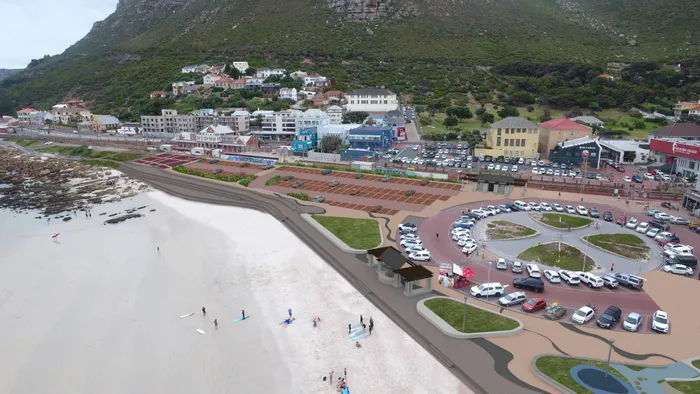Muizenberg beachfront upgrades set for February

Upgrades planned by the City aim to modernise Muizenberg beachfront facilities.
The City has announced plans to begin the refurbishment of the Muizenberg beachfront in mid-February 2025.
Described as one of the largest capital ventures by the City’s coastal management branch in recent years, the project will upgrade public amenities and replace ageing infrastructure, including the seawalls.
The work, expected to be completed by the end of 2026, will focus on areas along Surfer’s Corner, the western section of the beachfront, and the informal gravel parking area next to the railway line.
Other targeted sections include the main promenade, the St James walkway connection, and the eastern parking area.
The project will be carried out in phases to ensure minimal disruption to the community and visitors, according to mayoral committee member for spatial planning and environment Eddie Andrews.
“The first phase will focus on Surfer’s Corner. The beach will remain open and accessible at all times, but there will be unavoidable impacts during construction,” said Mr Andrews.
"We will do everything possible to mitigate the inconveniences, but this is a significant project with a long timeline," he added.
Work in the initial phase will include demolishing and rebuilding the existing seawall and pergola, re-routing underground services, and upgrading parking facilities.
“Public information displays have already been installed at various points along the beachfront. These displays feature artist impressions of the upgraded area and QR codes that allow the public to sign up for updates and access more information about the project,” Mr Andrews said.
The upgrades sought to balance Muizenberg’s historical and cultural significance with modern needs while incorporating key features such as relocating the ablution block further inland, rebuilding the pergola in its original style, and using heritage materials in the new designs.
Universal access ramps and adaptive surfing modifications would be part of the improvements.
Muizenberg resident Ant O’Neill raised concerns about the proposed changes, calling for integrity in planning and prioritisation of broader community needs.
“While a heightened promenade is necessary with rising sea levels and worsening storm surges, certain aspects of the plans overlook critical community priorities,” he said.
He was unhappy about the lack of a third ramp to the beach at the western, railway end, to improve accessibility, as well as the reduction in ablution facilities.
He also questioned the allocation of space, suggesting that current plans favoured specific organisations with limited community use over more active, community-serving groups.
“Catering to private or niche interests over public service undermines the needs of locals, visitors, and the broader community,” Mr O’Neill said, urging planners to revisit inland facilities and ensure the designs addressed all stakeholders effectively.
Daniel Blaauw, CEO and founder of a property management agency in Muizenberg, welcomed the planned upgrades, noting the long delay in their implementation.
He said that while the work would inevitably cause disruptions, it was essential for improving the beachfront. “The beachfront upgrade has been a long time in the making, and we are looking forward to seeing the upgrades happen,” Mr Blaauw said.
He added that the improvements would enhance the experience for beachgoers and help position Muizenberg as a world-class beach destination, particularly with the growing global interest in surfing.
“We feel Muizenberg is going through many major improvements, and this will definitely help with providing beachgoers a more favourable experience when coming to Muizenberg,” he said.
Mr Andrews said the refurbishment would deliver long-term benefits to Muizenberg’s residents, businesses, and visitors.
“This revamp will enhance the area’s appeal and create a safer, more inclusive space for everyone to enjoy,” he said.
Related Topics: